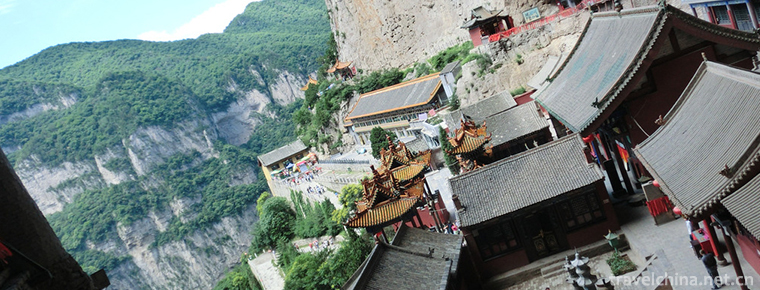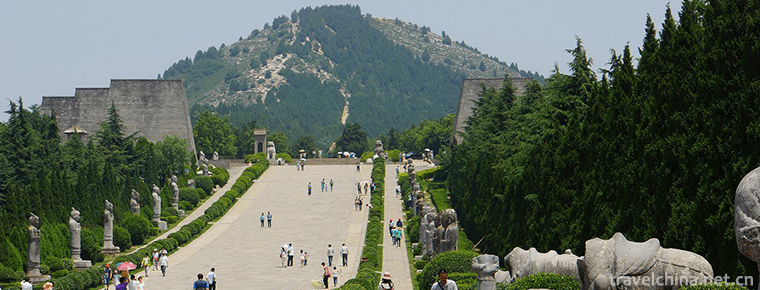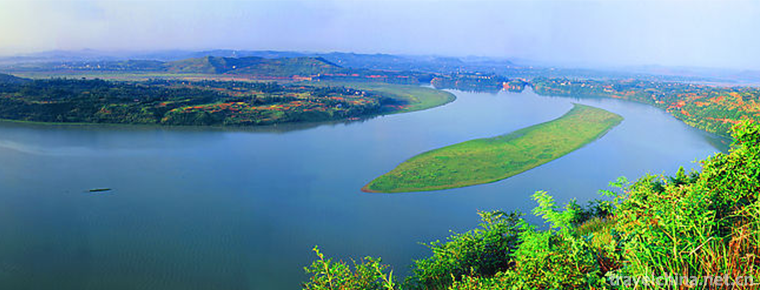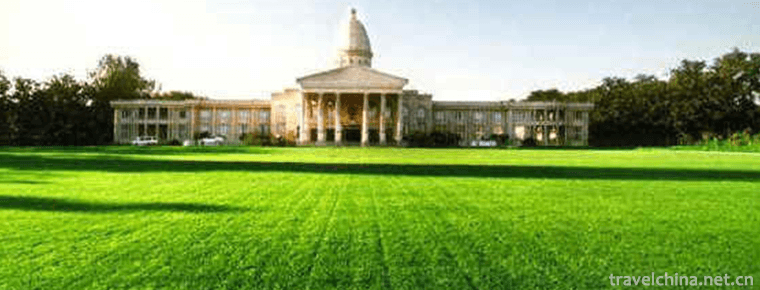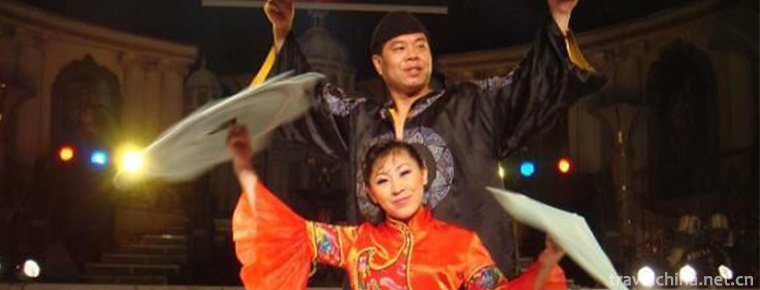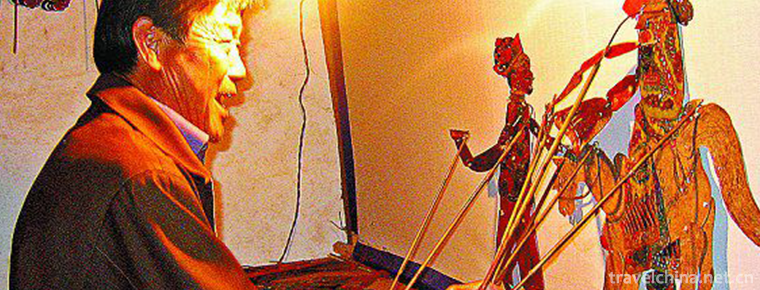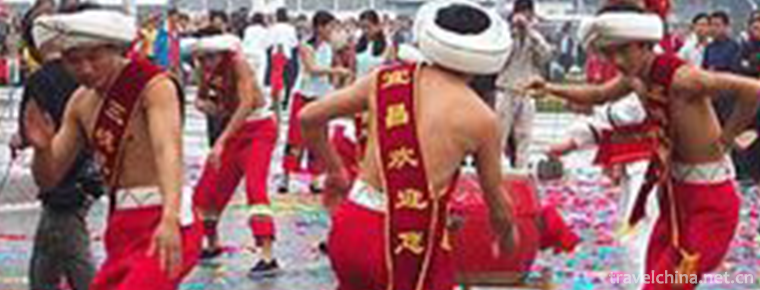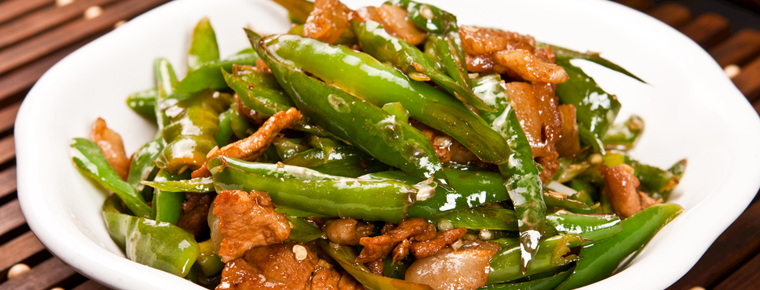Jiulian mountain
Jiulianshan Scenic Spot is located in Songshuping Village, Shangbali Town, Huixian City, Xinxiang City, Henan Province. It belongs to the south foot of Taihang Mountain. It has superior geographical position and convenient transportation. There are 106 National highways, 107 National highways, Beijing-Zhuhai Expressway and Jidong Expressway. There are Beijing-Guangzhou Line, Xinhe Line and Xinjiao Line on the railway.
Jiulianshan is located 20 kilometers northwest of Huixian City, Xinxiang City, Henan Province. Its total area is 20 square kilometers. It is adjacent to Baligou, Guanshan, Huilong, Wangmangling and Xiyagou scenic spots. It is 50 kilometers east of Xinxiang City, 120 kilometers south of Zhengzhou City, 45 kilometers west of Jiaozuo City and 70 kilometers north of Hebi City.
On April 26, 2012, Jiulianshan Scenic Spot was listed as the third national 4A Scenic Spot in Xinxiang City through evaluation. It took only two and a half years for Jiulianshan scenic spot to get the title of 4A scenic spot from its opening to its success.
In terms of Korea's inbound tourism, Jiulianshan ranks first in Xinxiang and ranks first in Henan Province. From 2009 to 2011, a total of 45,000 inbound tourists from Korea were received. Hanadore, South Korea's largest travel agency, awarded the Jiulianshan scenic spot as "the preferred scenic spot for South Korean tourists in Henan Province".
Orion of the Name
Jiulian Mountain is named for its nine peaks resembling a blooming lotus flower. Qing Daoguang's Huixian Zhishan
Water records: "Jiulianshan in the west of Shimenkou, there are nine peaks like lotus, so it is called Jiulianshan. Dongshan is called"Donglian". It is named for"Xilian". The roads are all rocky and dangerous. Jiufeng sprang up abruptly and surrounded by a platform of several thousand square meters in the middle, called "JiuLiantai". The ancients once left the famous sentence "Bagua Mountain Revision Fruit, JiuLiantai Understanding the True Meaning".
Scenery characteristics
Jiulian Mountain Jiufeng crisscross, mountain movement, forming three huge canyons: Xilian Valley, Guanhou Grand Canyon, Hongyan Grand Canyon. The Three Gorges are surrounded by triangles, with rocks like axes, peaks like knives, waterfalls like drills, shallow pools and streams at the bottom of the valley like jasper. Due to the influence of geological structure and rock type distribution, the types of mountains are complex and diverse, with rolling mountains, dense valleys and steep peaks and ridges. Geomorphological landscapes are mostly peak walls, peak ridges and valleys, such as Danxia, dissolution columns, dissolution peaks, peak forests, peak clusters, waterfalls, water falls, rock paintings, etc., which are characterized by "steep peaks, steep peaks and deep Bitan".
After the Guanhou Grand Canyon and Xilian Canyon flow continuously throughout the year, and the vegetation in the canyon is abundant. The scenic area utilizes the gap of the canyon to build dams to block and store water at different levels, thus forming the canyon water belt. The main landscape of Guanhou Canyon is represented by "double symmetrical waterfall" at the end of the canyon. One falls 120 meters to the right. The water flows from the Shibanhe River in Huilong Scenic Area, while the other falls 80 meters to the left. It flows from Xiyagou in Wangmangling Scenic Area, Shanxi Province. The left waterfall is like a man's free and unrestrained form, the right waterfall is like a woman's graceful form. The two waterfalls form a shallow pool at the end of the canyon. It's quite like a couple holding hands for a lifetime. You have me, I have you, do not give up. The local folk name "Dragon and Phoenix Falls" is the ideal place for couples to promise love.
Longfeng Waterfall to the gate of the scenic spot is 8 kilometers long. Along the way, there are natural scenery such as Millennium Pool, Peacock Creek, Qipi Waterfall, Rhesus Monkey Area and so on. Millennium sandalwood to Longfeng Waterfall, scenic spots use the bottom drop to set up different sizes, different heights and different dams, forming multiple cascade waterfalls and many Bitan, Bitan Waterfall twists and turns in the bottom of the valley. The hillsides on both sides of the valley are planted with romantic and sentimental trees, forming romantic and individualized landscape features, and integrating the love songs such as "Miao carving", "Miao Sister's Day", "Liu Sanjie's ballad", "Ganzhuang mountain pool", "Korean springboard swing" and "Huaer" in the intangible cultural heritage. Hand-in-hand dance shows and wedding customs include "Ordos Wedding Customs" in Inner Mongolia, "Tu Wedding Customs" in Qinghai Mutual Assistance, "Salar Wedding Customs" in Xunhua, Qinghai, and "Targik Wedding Customs" in Xinjiang.
Xilian Canyon from the Tian Tier parking lot to the original nursery, water curtain cave, natural landscape such as Jiuliantan, Qinglong Waterfall, Tianhu, Tonghui River, Tianyuntan, Watching Wind Pool, Performing Waterfalls, Ancient Trestle Road, Sanjiang Coffin, Water Curtain Cave, etc. Humanistic landscapes such as Tian Tier and Xilian Temple have certain characteristics, mainly represented by Jiu Lian Tan, Qinglong Waterfall and original nursery. Jiu Lian Tan's green water is "quiet" and Qinglong Waterfall's "momentum is like a rainbow", which have high appreciation value. Xilian Temple's Buddhist and Taoist resonance, incense and fire customs are full of folk characteristics. Xilian Valley is centered on Xilian Temple, which has ethnic religious tendencies and belief customs. The exhibition, exhibition and exhibition of the quality cultural heritage project have formed a holy place with religious characteristics and folk religious characteristics.
Places of historic figures and cultural heritage
Jiulianshan's humanistic landscape is more prominent: Donglian Temple, Xilian Temple and Houjing Palace are three temples. The three temples are the place where people spontaneously believe. The gods, Buddhas and Taoists are in harmony. They have folk cultural characteristics, commonly known as "Xiaoxitian". In his travels to Jiulian Sanqi, famous writer Tian Zhonghe called Jiulian Sanqi together with Jiulian mountains and rivers with Jiangnan charm, small Xitian temples with folk characteristics, and mysterious Jiulian Zhangshu. He praised it as "the scenery is in dangerous peaks, the temple is in the folk, and the tent is in the soul".
Main attractions
Landscape of Jiulianshan--Red Bean Water Playing
Water-soluble stalactites resemble Wolong, from which springs flow and fall down cliff slopes into pools at the bottom of ditches. Next to it, a yew stoops and looks up all the year round, accompanied by flowing water. Legend has it that Bailong lies here because of illness. He sees red beans floating in the pool, probes the water with his head, plays with red beans, drinks a few mouthfuls of pool water, gets rid of his illness immediately, rides the clouds and leaves a mark of lying down. Spring water flows down along the mark. Red beans fall into the water from time to time and come into the pool with the water, so they are called "red beans playing with water". It is said that drinking water flowing by yew can cure many kinds of persistent diseases.
Jiulianshan Scenic Spot--Groups of Waterfalls
Groups of waterfalls are 1500 meters long, with a drop of more than 260 meters. The rocks in the ditch are vertical and horizontal, and the trees cover the sky. Spring water splashes and falls in the overlapping rocks, forming layers of water curtain. Flowing water splashes, sometimes surging like tide, sometimes sluggish like practice, such as magnificent landscape painting scrolls, one by one presented in front of tourists, is the best situation for water-viewing hydrophilic. "Shuowen Water Department", "Waterfall" Note: Water splashes also, so the famous group of waterfalls.
Special products in scenic spots
1. Wild vegetables: wild leek, wild celery, wild agaric, wild mushroom, sesame leaves and so on.
2. Agricultural and sideline products: eggs, hawthorn, walnuts, persimmon cakes, etc.
3. Chinese herbal medicines: Forsythia suspensa, Huoxiang, Codonopsis pilosula, Polygonum multiflorum, Bupleurum chinense, Schisandra chinensis, Yam, Salvia miltiorrhiza, Ganoderma lucidum, Rabdosia rubescens and more than 10 kinds.
Tourism information
edit
Practical information
Ticket Price
Ticket market 80 yuan per person, online advance booking 60 yuan per person (Note: scenic tickets for pass system, can visit all scenic spots in Jiulianshan scenic spot), within the scenic spot tip: 10 yuan per person (one way), sightseeing elevator one way 30 yuan per person 50 yuan per person.
Notice of reservation
Ticket-free crowd: with the ticket-free certificate of scenic spots stipulated by the state (officer's certificate, journalist's certificate, old age certificate, etc.); children under 1.2 height
Preferential policy: 50 yuan per person for student vouchers, 40 yuan per person for 60-70 year olds.
Nearby attractions
Henan Province Paomaling Leisure Eco-Park, Baligou Scenic Area, Wanxianshan Scenic Area, Baiquan Scenic Area, Guanshan Geological Park, Huilong Scenic Area, Jinghua Garden, Luwangling Mausoleum, Yellow River Old Road Wetland Nature Reserve, Jiangtaigong Hometown, Bigan Temple, etc. (The main entrance of Baligou Scenic Area is next to the main entrance of Jiulianshan)
Traffic information
External traffic
Xinxiang bus terminal (next to the railway station) has one bus to Jiulianshan scenic spot every day at 8:00, 9:00, 10:30 and 16:00; the fare is 15 yuan, and the departure time for holidays will change. Please arrive at the bus station ahead of time; Xinxiang bus station takes Huixian intercity bus (10 minutes one bus), and Li Shizhen of Huixian gets off and takes the Zhongba bus of Jiulianshan scenic spot (the driver knows it well).
Internal traffic
Battery cars in scenic spots cost 5 yuan per trip; there are also sightseeing cars running between the parking lot and the gate of the scenic spots, which cost 10 yuan per trip; and adult touring elevators cost 20 yuan per trip and 35 yuan per trip.
Myths and legends
Legend has it that there is a pool of lotus flowers in Yujing, Xuandu, a fairy in the Yuan Dynasty. There is a fairy who serves lotus every day. She is like a sister to lotus. The Fairies in Yujing call her lotus fairy.
On this day, Yuanshi Tianzun was sitting in silence. Taiyi relief emperor rushed to say that there was a drought in the southern part of Taihang Mountains, three years of rain did not fall, and the spring water in the mountains could not flow out; the people were not enough to eat, wear warm clothes, help the old and bring the young, flee famine and beg for food, and suffered terribly.
After the first day of the Yuan Dynasty, he immediately issued an order and sent people down to Nantaihang. Just then, Lotus Fairy Aunt came and said to Yuan Shitianzhong that she was willing to go down to Nantaihang to help the people affected by the disaster.
Yuanshitian honoured the request of Lotus Fairy Gu, and said to Lotus Fairy Gu, "Fairy Gu goes to pick a blooming lotus flower, plucks two lotus leaves, holds lotus flowers and treads lotus leaves, soars and travels thousands of miles in the day. When Xiangyun appears, she breaks nine petals and spreads them to the earth. Where she falls is in the practice of Fairy Gu's foot in Nantaihang, please do painstaking protection there." Bless all sentient beings."
The lotus fairy aunt, at the command of Yuan Shitianzhong, stepped on the lotus leaves and gently floated away from Yujing, the capital of Xuandu; a breeze came, whirring in her ears and falling to the ground.
Suddenly, a red cloud surrounded the lotus fairy, who pinched down nine petals and threw them down.
Nine lotus petals fall in the South Taihang Mountains. In the blink of an eye, where the petals fall, nine peaks protrude.
The lotus fairy landed on a flat ground in the middle of the nine peaks. She scattered the lotus flowers around her hands. Later, it became a lotus pond. Two lotus leaves on the feet of Lotus Fairy Gu drifted eastward in the wind, drifting across the deep valley and landing successively.
Lotus fairy aunt looked around. There was a cave on the cliff. She climbed into the cave and practiced magic here to help the people.
It rained heavily first. After a period of time, disasters disappeared downhill and downhill. The weather was smooth and the people began to smile.
After a while, the people knew that there was a fairy aunt in the mountains, who preached magic, rescued suffering and blessed peace. They went up to the mountains one after another to thank the fairy aunt, and the other to ask the fairy aunt to bless her for disaster relief and safety.
People come and go, day after day, gradually people know that the nine peaks here are changed from lotus petals. They call it Jiulianshan, and the flat land in Jiulianshan is called Jiuliantai.
After a few years, someone lived here, called Xilian. The two lotus leaves fell to the ground, but also some people live, one called Donglian, one called Zhonglian.
The Nine Lotus Fairy Aunt is the Old Mother of Nine Lotus
The lotus fairy aunt stayed in Jiulianshan for more than ten years. The beautiful scenery and the good people made her unwilling to return to Yujing, the capital of Xuanxue. In order to make the lotus fairy aunt practise calmly, Yuan Shitianzhong did not recall the lotus fairy aunt, but added a solemn decree that only asceticism was allowed and marriage was forbidden.
The lotus fairy nun practiced hard and blessed the people with peace. She was respected by the people of Nantaihang. Her fame grew stronger and her reputation spread farther and farther.
I do not know how many years later, the lotus fairy aunt repaired Zhenggu did not know where to go, and came to Jiulianshan to preach at intervals. As the number of worshippers increased, she was renamed Old Mother Jiulian.
Later, Xilian, Zhonglian and Donglian built temples and worshipped Jiulian's mother in them. People from all sides, in groups, went to Jiulianshan to worship Jiulianshan Mother. The incense was very strong.







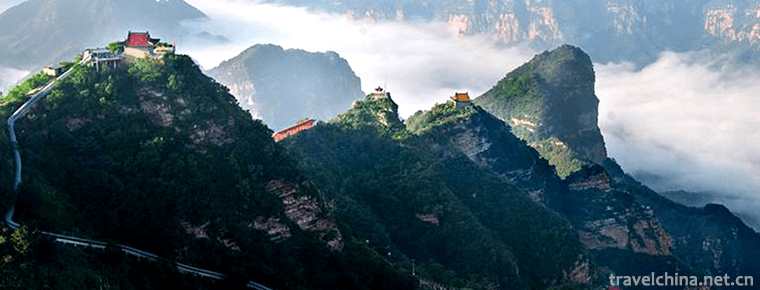
-
Mianshan Scenic Area
Mianshan Scenic Spot is a national AAAAA class tourist attraction, a key scenic spot in Shanxi Province, the birthplace of Ching Ming Festival (Cold Food Festival),.
Views: 298 Time 2018-11-24 -
Qianling Scenic Area
Qianling Scenic Area, located in Qianxian County, Xianyang, Shaanxi Province, covers an area of 1002.71 square kilometers. Population: 580,000 (2011), postcode: 713300..
Views: 136 Time 2018-12-22 -
The First Sangzi in Jialing
The first Sangzi of Jialing is located in Peng'an County, Sichuan Province. Peng'an is the home of Sima Xiangru, a great poet of the Han Dynasty. It is located in the northeast of Sichuan .
Views: 121 Time 2019-01-21 -
Shenyang Green Island Tourist Resort
Located in Tonggou Township, Sujiatun District, Shenyang City, 15 kilometers away from Shenyang City, Green Island Tourism Resort is a comprehensive multi-functional tourist area .
Views: 434 Time 2019-02-08 -
Duet in Northeast China Errenzhuan
Errenzhuan, historically known as small Yangko, double play, bouncing, also known as the mouth, double side songs, Fengliu, Spring Song, half-class opera.
Views: 176 Time 2019-04-27 -
hubei drum
The original name of Hubei drum is "drum book", also known as "drum storytelling" and "drum Beijing tune", etc. It is a traditional rap art popular in Xiaogan.
Views: 150 Time 2019-05-03 -
Shadow Show
Shadow play, also known as "shadow play" or "lantern shadow play", is a folk drama in which characters are silhouetted from animal hide or cardboard to perform stories. During the .
Views: 104 Time 2019-06-09 -
Sayerhao of Tujia Nationality
"Sayeer Hao" of Tujia nationality in Changyang, Hubei Province is a kind of sacrificial song and dance of Tujia nationality in the middle reaches of Qingjiang River valley. "Sayer Haw&q.
Views: 367 Time 2019-06-23 -
Fried meat with chili
Stir fried meat with chili is a dish made with chili and streaky pork as the main ingredients and soybeans, garlic seeds, soy sauce, oil salt, monosodium glutamate and ginger as auxiliary ingredients..
Views: 212 Time 2020-03-18 -
juvenile Meng Ran Tik Tok Songs 2020 Hot Songs
"Juvenile" is a song composed and sung by mengran, which is included in the album "juvenile" released by mengran on November 14, 2019..
Views: 182 Time 2020-05-21 -
Thousand Buddha Cliffside Sculptures
Qianfo cliff, located 4 kilometers north of Guangyuan City, on the East Bank of Jialing River and on the ancient Shu Road of Jinniu, has a long history and exquisite carving skills. The grottoes began in the late Northern Wei Dynasty, flourished in the Tang Dynasty and ended in the Qing Dynasty. After thousands of years.
Views: 340 Time 2020-11-08 -
Yibin secondary industry
In 2019, the total industrial added value of Yibin City is 99.082 billion yuan, an increase of 9.5% over the previous year, and its contribution rate to economic growth is 45.5%. At the end of the year, there were 824 Industrial Enterprises above Designated Si.
Views: 106 Time 2020-12-18
